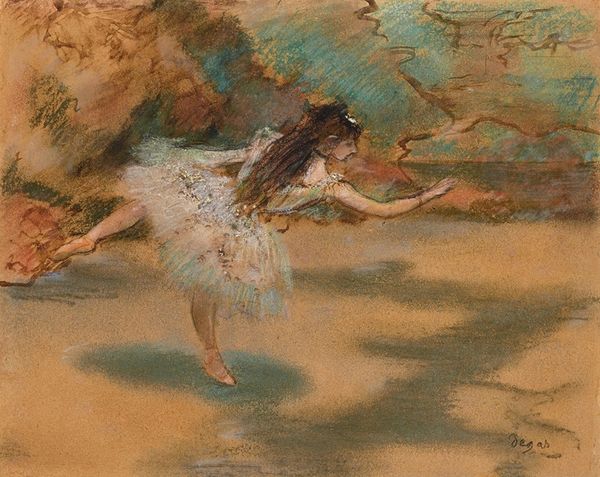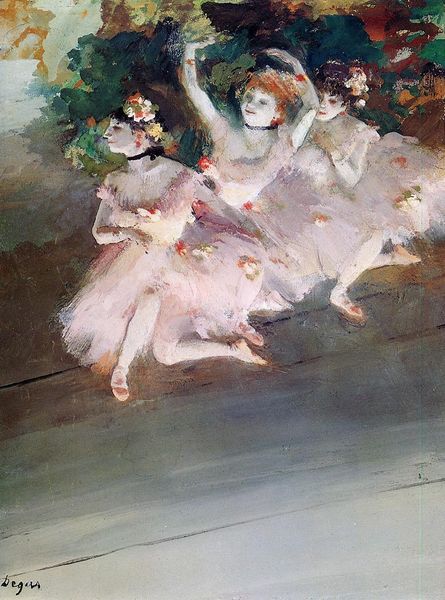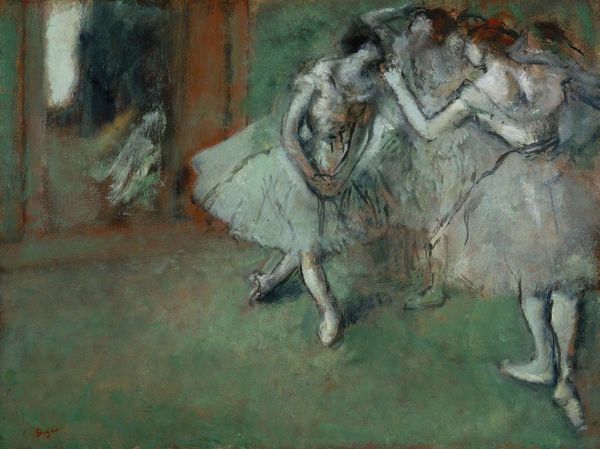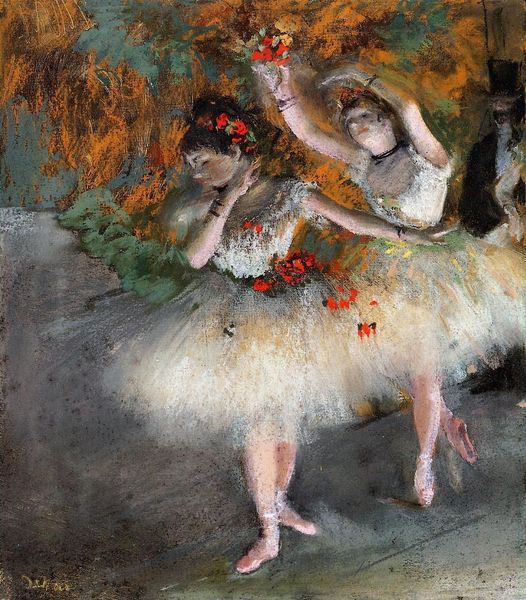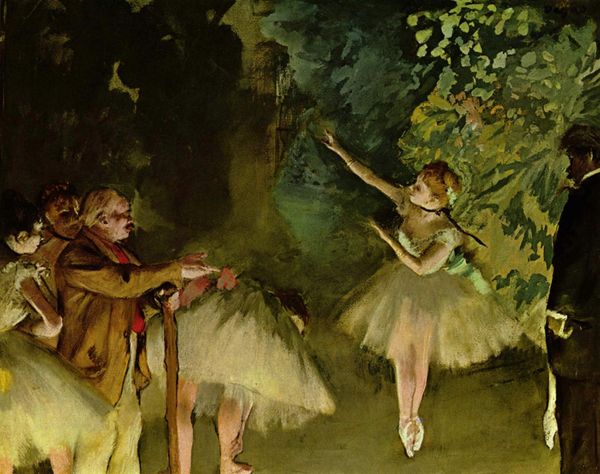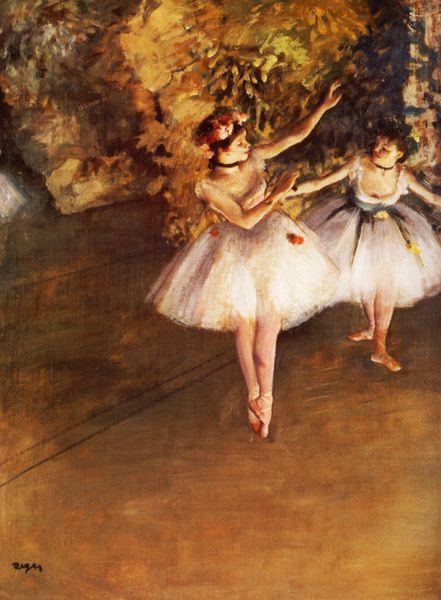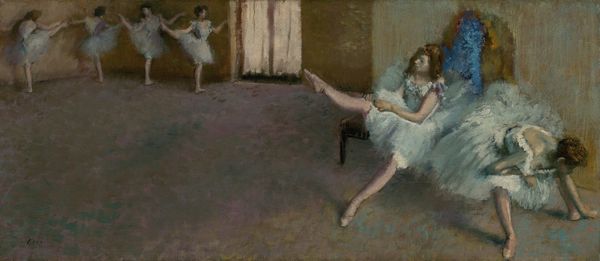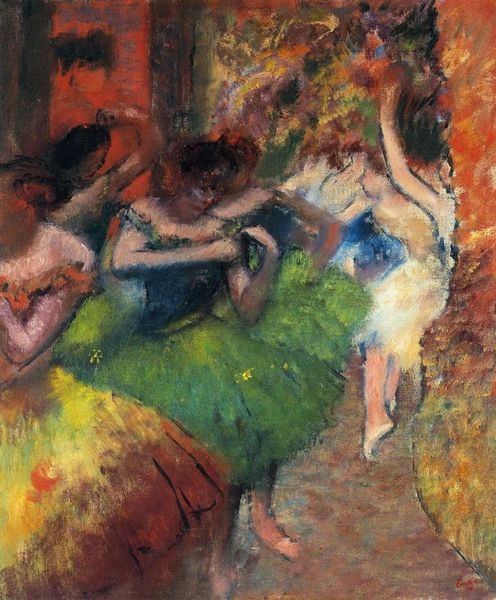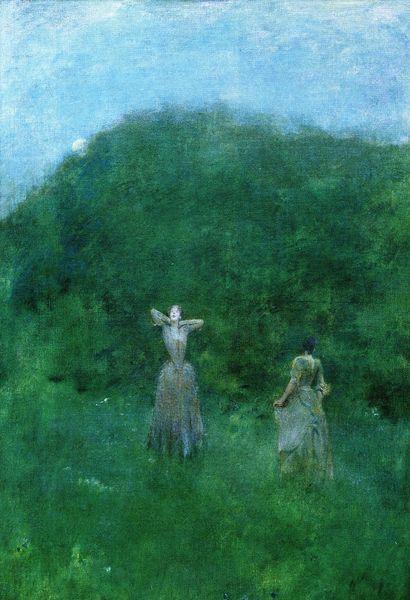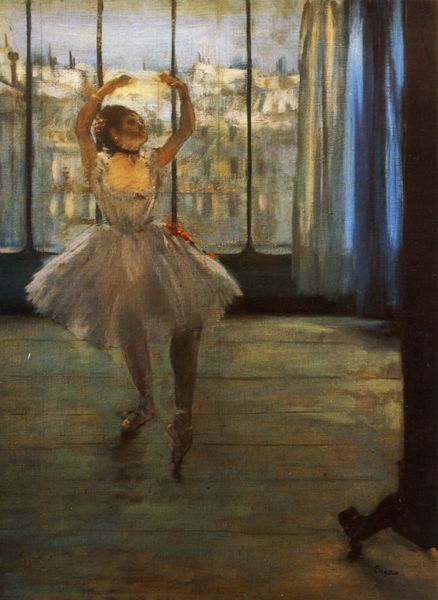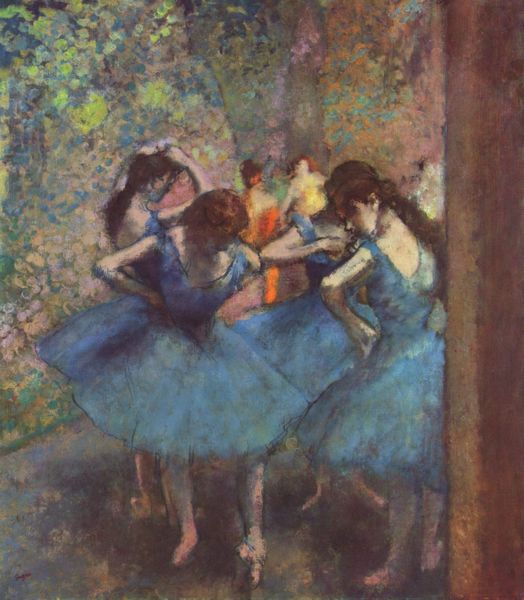
Dimensions: 50 x 61 cm
Copyright: Public domain
Editor: Here we have Edgar Degas’s "Les Pointes," painted in 1878. The loose brushstrokes of oil paint evoke a sense of fleeting movement. I'm curious, given Degas' broader oeuvre, how does this work speak to you from a formal perspective? Curator: It is compelling how Degas manipulates spatial relationships in "Les Pointes." Note how the dancer isn't centrally located; she's shifted to the left, partially obscured by the surrounding foliage. This placement disrupts traditional notions of perspective, foreground, and background. Editor: I see what you mean! It feels less like a portrait and more like a captured moment, perhaps? How do you think the execution and brushwork contributes to this sensation? Curator: Precisely! Observe Degas's application of paint. It's not blended in a classical manner. Instead, he employs short, rapid strokes, particularly in rendering the dancer’s tutu and the landscape, to evoke a sense of movement and light. These unblended marks create a lively, shimmering effect. We should also observe the muted tones; it is decidedly more muted than traditional romantic landscapes. Editor: That makes me see the painting in a new way. So it is as much about the artistic technique as it is about the subject matter, it is not just "a ballet dancer in a landscape" then! Curator: Indeed! The brushstrokes animate the entire surface of the canvas. Also, do not miss the secondary figure and the diagonal axis through the center which enhances this idea. Formally speaking, the subject is a component, not the primary focus of this art. Editor: That is a valuable formal analysis that has completely changed my perception of Degas' work, especially in the way it relates to form and movement. Curator: Yes. By concentrating on form and method, we have attained a richer knowledge of Degas’ technique.
Comments
No comments
Be the first to comment and join the conversation on the ultimate creative platform.

